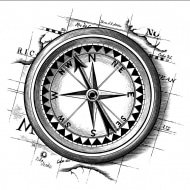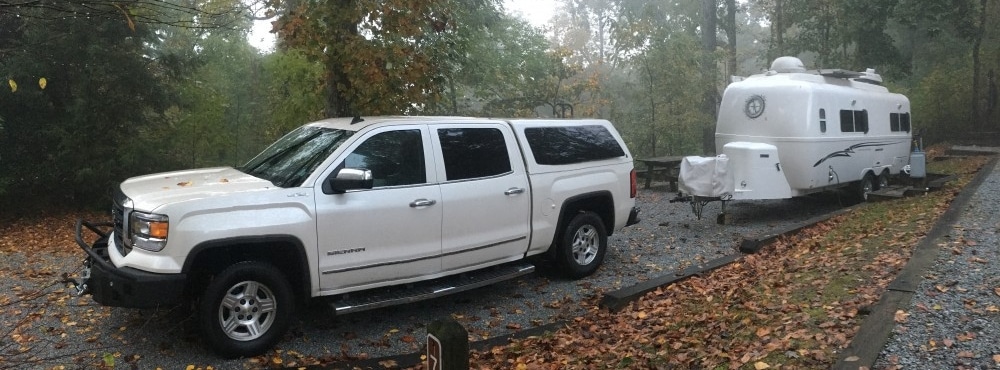-
Posts
3,240 -
Joined
-
Last visited
-
Days Won
167
Everything posted by ScubaRx
-
You would actually cut the weight by almost 100 pounds.
-

Tire pressure confusion - Legacy Elite 2 POLL
ScubaRx replied to John E Davies's topic in Towing an Oliver
I think you may be on to something here. Because Mars is half again further from the sun than Earth, may explain why our tires run cooler there. Seems reasonable… -
Up to around 150 continuous amps, a single 100 amp hour LiFePO4 battery can take all the current you can throw at it. The PD chargers in our Oliver’s put out 45-60 amps depending on how old your trailer is. The limiting factor here is the wire size going from the charger to the batteries. You can’t necessarily just add a higher output charger without considering the wiring too. The Xantrex 3000 watt inverter/charger has a maximum 150 amp output. FYI: AGM batteries should not be charged at a rate greater than 25% of their stated battery capacity. The battery capacity is indicated by Ah (amp hour).
-
Battle Born's reliable, safe, and non-toxic LiFePO4 batteries last 10x longer than lead acid. Probably correct, I believe this to be true. They are 1/5th the weight for the same amount of usable power. Correct as written, but a lithium battery will still weigh 1/2 of what a similarly sized lead acid will weigh. They charge 5x faster. They CAN charge 5x faster IF you have a charger that can put out 5x the amps of what you currently have. require zero maintenance. NOTHING requires ZERO maintenance. and are backed by an industry-leading 10 year warranty. True…
-
This is how the current situation got started. Years ago, Oliver’s sales manager asked me to come up with a design for a bike rack. I did and they built a good 2” rack that could handle any two bikes. They informed all buyers of the rack its weight limitations and even had a sticker stating that information proudly displayed on each rack. Oliver built a bunch of these units with my design but ultimately changed it to the current rack first with a 2” receiver then moving down to a 1-1/4” receiver due to “the incident.” Much like the general population, there are a few owners that don’t necessarily read and follow directions. One owner didn’t. He bought one of the racks with the 2” receiver and, although I don’t know exactly what happened, I can imagine him installing one of those flat racks you see hanging off the tail end of a vehicle. He probably loaded a cooler of ice and beer on one end and a plastic tote of whatever beside it, put a coupe of bungees around it and called it good. Somewhere along his way everything proceeds to turn to shite. He complains to Oliver that his expensive rack didn’t meet his expectations, they wonder how it failed if it hadn’t been overloaded, he swears it couldn’t have been, one thing leads to another and here we are… I’ll be happy to share my design with anyone. Although I don’t carry bikes on it, I’ve used it on the rear of our Hull #050 many times carrying upwards of 200 pounds. I’ve never had an issue with it.
-
The Haunted Campground
-
Good idea!
-
Actually, if you ran the A/C for an hour off your batteries you'll pull out more than 100 amp hours. Realize those amps have to be replaced somehow. Solar would take most of a good sunny day at lower latitudes (think Southern Arizona rather than Northern New York) to do it. Running the generator is much faster but likely would still take a couple of hours. Why not just run the generator for an hour to power the A/C and get everything cooled down and call it done.
-
Welcome to the most exclusive club in the world, the Oliver Owners!
-
$100 or $150 per hour.
-
I couldn’t afford their hourly rate.
-
Frank, I was just thinking about that fact last night and I believe you are correct. I seriously doubt there are any two Oliver's that are EXACTLY alike. And I guarantee that none of the first 100 or so are anything like each other.
-
You are correct in that this is a 30 amp slow blow fuse. It goes into the jack circuits and is common to every Oliver made so far. My advice is to order a few more, you'll eventually need them. These might not look exactly like what you pictured but they are the same and will work just fine. I'd shop around, you'll probably be able to find less expensive ones, possibly at a local auto parts store. As @dewdev suggested above, please add all your pertinent information about your Oliver and your Tow Vehicle to your signature. Since Oliver has made numerous changes in components and options over the years, when posting related to these, please list your Oliver’s year and model, and the brand of the component you have questions about. It will make the group’s responses much more informed.
-
Oh my Goodness. We are planning on leaving on our FIRST trip of the season this coming Saturday.
-
Hurricanes don’t sneak up on people. Drive away from it as soon as you know it’s headed toward where you are. Tornadoes do sneak up on you. Stay weather alert during an outbreak and prepare to take shelter in a sturdy building. Don’t forget to take essentials with you, ID, money, meds, pets. Don’t leave a vehicle and seek shelter in an underpass. Despite the fact it sounds like a good idea, it likely won’t end well for you. Sheltering in an underpass probably would be a good idea for hail. Dime size hail should not be an issue.
-
As I previously stated, "the 2023 Sequoia (in 2WD) will have a maximum tow rating of 9,520 pounds". I don't personally consider that, 'a great towing ability'. It's an OK towing ability and is probably adequate for an Elite II under most conditions. But, most folks aren't going to want a 2WD and will opt for a 4WD which will further reduces the towing capacity as will any of the options that we add to make our tow vehicles into something we actually want to own and drive. Unless you are Scarlett Johansson or Audrey Hepburn, good looks won't get you too far down the road.
-

Dometic Gas Stove doesn't ignite
ScubaRx replied to Citrus breeze's topic in Mechanical & Technical Tips
Good thinking with the vacuum. That way, if the air movement dislodged the blockage, it would be pulled out. I tried to unblock an air hose years ago that had a dirt dauber nest in one end by hooking it up to a compressor. All I managed to do was to push the nest deeper into the hose. I was finally able to get it cleaned out with water and more air. Thanks for adding information to your signature. I modified it slightly by adding your model year - 2021. The reason for this is since Oliver has made numerous changes in components and options over the years, when posting related to these, listing your Oliver’s year and model, and the brand of the components makes the group’s responses much more informed. -
We need to know specifics about your trailer ie model, year, hull #, etc. These should be added to your signature in your profile so they show up in each of your posts. Does your trailer have the onboard EMS?
-

Leaking windows when it rains
ScubaRx replied to Citrus breeze's topic in Mechanical & Technical Tips
You really need to add this info to your signature. It will greatly aid others in helping you with future questions. Also include information about your tow vehicle. -

winterization questions for Elite
ScubaRx replied to Ben Phinney's topic in Mechanical & Technical Tips
There were some trailers built that did have a valve in the black water line. It was accessed from under the forward dinette seat. -
Compare what you watched him do to these steps: 1- After the hub has been replaced and the spindle nut is started, spin the hub with one hand while tightening the nut with the other. 2- When the nut is hand tight, the hub will still turn but with possibly some resistance. 3- Using a socket of the appropriate size, tighten the nut until the hub can no longer be turned by hand. This process is to properly seat the bearings into their races. 4- Back the nut off with the socket until you can once again turn it by hand. DO NOT allow the hub to spin during this step. If it does, retighten with the socket. 5- Tighten the nut by hand until it stops. BACK OFF the nut to where you can insert the cotter pin. This could be up 1/8 turn. 6- Spin the hub to make sure it’s not too tight. Install the cotter pin. Note: Some Dexter spindle/nut combinations do not use a cotter pin but rather a spindle nut retainer which I much prefer. Same steps apply.
-

Where is the correct Jack placement point?
ScubaRx replied to Jheim's topic in Mechanical & Technical Tips
You are correct that it would hold better and be much safer directly under the welded beam. Say the jack stands were placed adjacent to the beam with the weight of the trailer resting on them. If the trailer shifted and slipped off, the stand would either take out the fiberglass on the outside wall or punch up through the floor. Also remember to always do work under the trailer while it is securely hitched to your truck. -
According to Toyota, the 2023 Sequoia (in 2WD) will have a maximum tow rating of 9,520 pounds. A 4WD version of this third-row SUV will only be able to tow about 9,100 pounds. The full-size, truck-based SUV with the highest tow rating is Stellantis' Wagoneer/Grand Wagoneer. The 2022 and earlier models were limited to 7000 pounds and maybe a bit more. That’s cutting it close on safety and capability.
-

Towing Report: 2022 Subaru Limited + 2022 Elite I
ScubaRx replied to DunnYet's topic in Towing an Oliver
That is correct. Payload includes all occupants (people, dogs, spirits, aliens, etc), any additions to the vehicle since it was manufactured (camper top, bed slide, Andersen hitch, helper springs, all camping gear, cell phone chargers, GPS, boxes of Kleenex, snacks, luggage, etc). If it was not in or on the vehicle when it was sitting on the car lot it is considered cargo. However, payload does not include the weight of any of the fluids that are necessary for the operation of the vehicle (fuel, oil, antifreeze solution, transmission fluid, etc) -
Lately, I've seen several posts from new or prospective owners contemplating purchasing a Weigh Safe Adjustable Trailer Hitch Ball Mount (WS) to tow their Oliver with. These are good looking hitches that have plenty of capability. They have HEAVY-DUTY TOWING CAPACITY: Made of 17 lbs of Aircraft Grade Aluminum & Stainless steel, with an industry leading towing capacity (GTW) of 12,500 lbs. The one I've referenced in the link above is the least expensive and has a four inch drop (6" 8" and 10" drops are also available.) I bought one for the Outlaw Oliver about 5 years ago and, after a while, I was satisfied with it. It took me about a year to finally get one that would consistently work. The first two I bought were returned and replaced (Other than my time and having to use an alternate hitch while waiting on their return there was no real cost to me). The reason that I'm sharing this info with the group is to provide you with food for thought. The WS's singular claim to fame (after it's good looking cool factor) is that it measures the tongue weight of the trailer. I'd guess it's accurate to 10 pounds or so. This is very useful information for safety. And, if you own a half dozen different cargo trailers this is the hitch for you. With this hitch you can instantly know what any particular trailer's tongue weighs and you can adjust its load accordingly. But, if you are only ever towing your Oliver, very little will ever change as to the way you will load it and the tongue weight will essentially stay the same every time. Don't expect that tiny little gauge to last forever. The WS from Amazon is listed for $308.99 + tax for your state. Not cheap. On the other hand there's this Sherline Trailer Tongue Weight Scale. Again, on Amazon, for $130.00. There are three models available; 1000, 2000 and 5000 pound capacities. They are all the same price because there is actually no difference between them other that the gauge. The 1000 pound model is all you will ever need for the Oliver. If you ever found yourself needing the bigger ones all you have to do is swap out the gauge. Either of these two options will accomplish the same end. One is somewhat cheaper and is more accurate. The other still has that cool factor that is important to a lot of us. Since I own both, maybe that makes me cool minus about $310.00. But, all is not lost. After we got the bigger trucks, I moved the WS to Tali's GMC Canyon Diesel so it still sees some use with our other two cargo trailers.
- 1 reply
-
- 6
-

-






